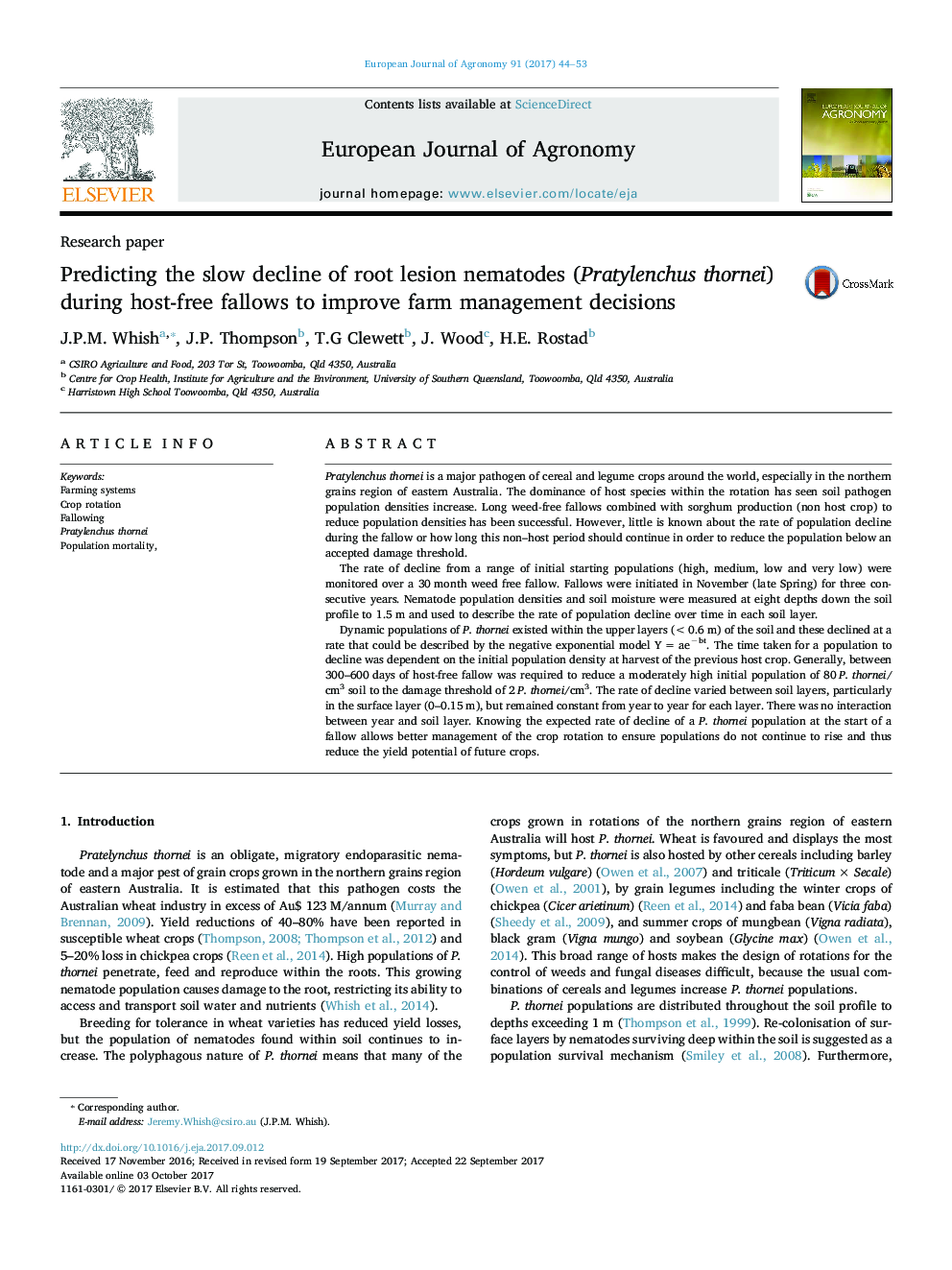| Article ID | Journal | Published Year | Pages | File Type |
|---|---|---|---|---|
| 5761281 | European Journal of Agronomy | 2017 | 10 Pages |
Abstract
Dynamic populations of P. thornei existed within the upper layers (<0.6Â m) of the soil and these declined at a rate that could be described by the negative exponential model YÂ =Â aeâbt. The time taken for a population to decline was dependent on the initial population density at harvest of the previous host crop. Generally, between 300-600Â days of host-free fallow was required to reduce a moderately high initial population of 80âP. thornei/cm3 soil to the damage threshold of 2âP. thornei/cm3. The rate of decline varied between soil layers, particularly in the surface layer (0-0.15Â m), but remained constant from year to year for each layer. There was no interaction between year and soil layer. Knowing the expected rate of decline of a P. thornei population at the start of a fallow allows better management of the crop rotation to ensure populations do not continue to rise and thus reduce the yield potential of future crops.
Related Topics
Life Sciences
Agricultural and Biological Sciences
Agronomy and Crop Science
Authors
J.P.M. Whish, J.P. Thompson, T.G Clewett, J. Wood, H.E. Rostad,
